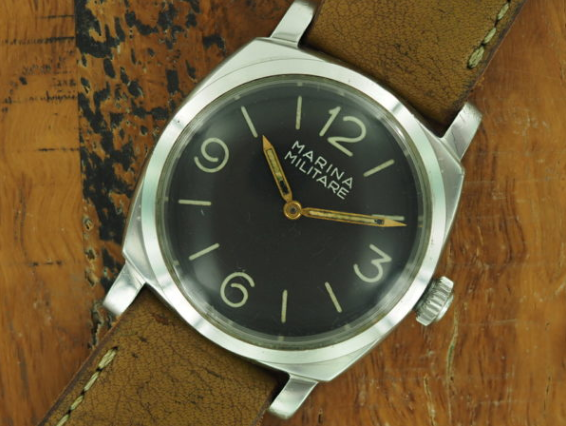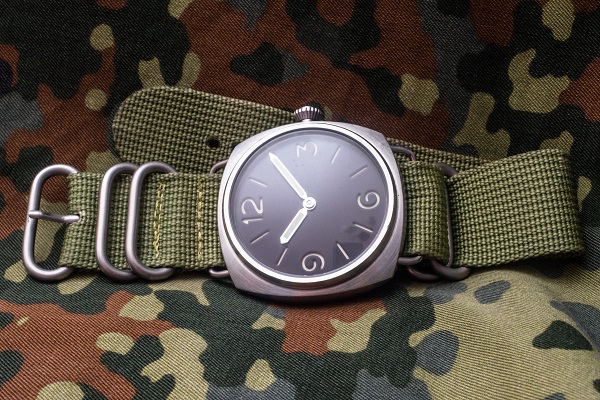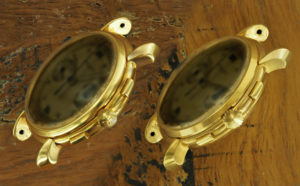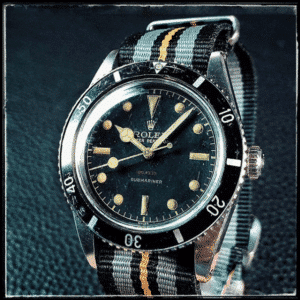 The aftermath of the Geneva auctions week gets definitely the attention of most dealers and collectors alike. Of course, I reckoned I’d have to write something about it to update my blog with something new. But as the days passed by, I got also really intrigued by the idea of trying to answer the questions that I am punctually asked by friends and clients every time a watch does not bring in auction at least the same price that everybody asks on the market: how can a Paul Newman sell for less than $ 250K? That watch sold for nothing, why? Is the market collapsing?
The aftermath of the Geneva auctions week gets definitely the attention of most dealers and collectors alike. Of course, I reckoned I’d have to write something about it to update my blog with something new. But as the days passed by, I got also really intrigued by the idea of trying to answer the questions that I am punctually asked by friends and clients every time a watch does not bring in auction at least the same price that everybody asks on the market: how can a Paul Newman sell for less than $ 250K? That watch sold for nothing, why? Is the market collapsing?
First off, I would like to give you a basic understanding of how auctions results should be interpreted. For this purpose, I have asked the four major international auction houses in the watch department – Christie’s, Sotheby’s, Antiquorum and Phillips – for their results in detail, and namely for their total sales before buyer’s commission, the exact number of lots offered for sale after lots withdrawn and the total of the low estimates of these watches, which we know of course generally also represents the reserve price offered to the sellers (except of course for the lots offered without reserve).
I thank all of them for having kindly submitted the requested information, albeit all in a different way: except for one auction house, the other three have provided partial data and, as I have realized sourcing my own information, did that apparently for a reason. Because, of course, the three numbers I asked for are all easily obtainable online, save naturally for the tedious task of extrapolating them manually. Honestly, I initially just meant to spare myself the leg work, but as I saw the info coming in different forms from different auction houses I couldn’t help thinking there was a reason for that.
The main piece of information all auction houses will make public is the total of all sales, inclusive of buyer’s commissions: the higher the number, the better the performance will appear and well, that extra 25% that’s added to the bill makes that number look even bigger. I do think that is an important piece of information anyway, because at the end of the day that is what the watches have really brought on the market. For example, if a steel Paul Newman sold for $ 160K hammer, therefore $ 200K including commission, it would be more appropriate to assess its market value around the higher figure, because that’s what the end user is evidently willing to pay for it. On the other hand, as a seller you will need to consider that you would be getting $ 160K selling that watch to auction. Auction sales’ outcomes are unpredictable, but there are stats that can help you steer your choice as a seller towards the safest direction: that’s when the other numbers come into play. So, let’s look beyond the two basics figures we’re normally offered: the total of the proceeds inflated with the buyer’s commission and, occasionally, the percentage of watches sold over the number of lots offered for sale.
 The reason why knowing the total of all estimates is useful, is that it can be opposed to that of the total sales before commission. This percentage generally ranging from barely below the 100% threshold and somewhat more over it, will tell you the average ability of that auction house to score above the minimum promised to the consignor. Generally the reserve price is fixed somewhere around half of what the watch is expected to potentially express including commission, as that’s more or less as high a number that can be reasonably guaranteed the seller, yet allowing the deal to sound attractive to potential buyers. Needless to say, the lower the reserve price will be, the easier it’s sale is going to be and the higher the selling price over reserve ratio will prove: conversely, sellers will be less and less easy to convince to consign as the offered reserve price lowers.
The reason why knowing the total of all estimates is useful, is that it can be opposed to that of the total sales before commission. This percentage generally ranging from barely below the 100% threshold and somewhat more over it, will tell you the average ability of that auction house to score above the minimum promised to the consignor. Generally the reserve price is fixed somewhere around half of what the watch is expected to potentially express including commission, as that’s more or less as high a number that can be reasonably guaranteed the seller, yet allowing the deal to sound attractive to potential buyers. Needless to say, the lower the reserve price will be, the easier it’s sale is going to be and the higher the selling price over reserve ratio will prove: conversely, sellers will be less and less easy to convince to consign as the offered reserve price lowers.
Believe it or not, the lower the reserve price of a lot offered for sale, the higher the odds that it’s going to perform well. So when your auction representative will push for a lower reserve price, he will actually be doing something that works best for you: he will leverage on the high estimate to convince you to let go, using it to raise your best hopes. This is where the average percentage above reserve an auction generally strikes can be an indicator of what you can expect: if your watch’s estimate will be $ 100K to $ 300K, and auction house that generally scores 90% of the low estimate in total sales before commission, it is likely to either fail at selling your item or will sell it at the very minimum you were guaranteed (plus the commission, that goes to them) which in this case will be $ 100K; if their average is 20% over the the low estimate, that will suggest that the odds you are going to sell your watch for $ 120K or more are relatively significant.
 I did run all these number for all the above mentioned auction houses and did get a good picture of what happened in this particular season. Although I will not share this analysis at this time, I do recommend that you do such study when pondering which auction house you will entrust with the sale of your watches. What I will share, however, is that one of them provided a detailed, already made analysis including all of this and even more data in a surprisingly exhaustive document; another one provided all the information I had asked for in a more informal way, allowing me to run the numbers without scrambling online and pull my own results; the third provided part of the requested info, just so there could be no complaints, yet presenting it in a way that certainly wouldn’t help to easily get a very clear picture; and the last one volunteered only their press release, a manifesto celebrative of their more significant sales and the total amount of the sales scored.
I did run all these number for all the above mentioned auction houses and did get a good picture of what happened in this particular season. Although I will not share this analysis at this time, I do recommend that you do such study when pondering which auction house you will entrust with the sale of your watches. What I will share, however, is that one of them provided a detailed, already made analysis including all of this and even more data in a surprisingly exhaustive document; another one provided all the information I had asked for in a more informal way, allowing me to run the numbers without scrambling online and pull my own results; the third provided part of the requested info, just so there could be no complaints, yet presenting it in a way that certainly wouldn’t help to easily get a very clear picture; and the last one volunteered only their press release, a manifesto celebrative of their more significant sales and the total amount of the sales scored.
Including premium, not the naked figure. In a way, each of these auction house’s individual performance related in its own way to how the statistic results were disclosed. One last thing I think is worth noting is that everyone sold as an average closer to the low estimate than the high, this time, something that everyone has noticed for sure. The market is apparently going through the expected slow down after a few years of consistent growth. Nonetheless, a total of 55, 717,756 Swiss Francs (roughly the same in USD) have been spent in watches during the week, excluding Christie’s Only Watch charity event, that bought another CHF 38,593,000 with the Patek Philippe 6300A-010 alone that sold for CHF 31,000,000. Definitely not too bad, I would say: this is obviously a market, and a serious one. I still can’t help imagine it aligning itself with that of contemporary art and vintage automobiles over time.
Let me try to explain why, in my opinion, watches offered at a much lower price of what we are educated to believe to be their market, occasionally sell for an even lower one, if they sell at all. The concerns that such events trigger, and the idea that these are necessarily signals of a crashing market, derive from the generalized misconception that the vintage watch market is somewhat similar to that of the stock exchange. I have many a time received calls from clients who had bought a watch – mostly a model appealing a vast audience, like a Rolex Daytona – just a few weeks before, asking “what are they quoting now”, as if there were department in Wall Street for watch dealings or something, and I were their trade agent.
And other calls, at times even confrontational, if a watch similar the one they owned was advertised by another dealer or sold in auction for less than they had paid for theirs. Again, all examples of how the expectation of new watch collectors are occasionally a bit confused and often, I will ad, because of what their trusted watch dealer has deemed reasonable- if not convenient- let them believe. The truth of the matter is that although high-end watches haves turned out to prove exceptional investments over time for many collectors, they haven’t done so for all of them. Inevitably what you buy, how long you hang on to it and at what particular time you sell it have a critical impact on this particular aspect, and selling your watch is not exactly the same thing as calling your bank investments’ desk agent and tell him to get rid of all your General Electric stock at the same price you’ve seen on the morning’s WSJ.
 In auction especially, many factors come in to play. First of all, a good number of buyers is made of dealers. Dealers do generally buy their inventory at market price minus some 10 to 20%, but that doesn’t mean they will buy each and every watch of the same make and model they will run into: especially at today’s prices, they will likely have to wait until what they already have in-house is sold, to then replace it. Exceptions may happen when the “multiple” comes stupid cheap or, more likely, when its characteristics are so outstanding that he will buy out of pure passion alone: and that’s when extraordinary comes into play.
In auction especially, many factors come in to play. First of all, a good number of buyers is made of dealers. Dealers do generally buy their inventory at market price minus some 10 to 20%, but that doesn’t mean they will buy each and every watch of the same make and model they will run into: especially at today’s prices, they will likely have to wait until what they already have in-house is sold, to then replace it. Exceptions may happen when the “multiple” comes stupid cheap or, more likely, when its characteristics are so outstanding that he will buy out of pure passion alone: and that’s when extraordinary comes into play.
Second, non professionals and collectors still tend to be very shy about buying in auction, because the distance can make it hard to personally inspect the desired watch and there is no return policy in case you just don’t like it; because of the payment terms that are likely to be less flexible than those offered by dealers; because of the pressure of having to commit to a price in a matter of seconds if you bid personally or on the phone; because of the occasionally unfriendly shipping and customs logistics that can come into play if they’re buying from another country. On top of it all, it takes at least two bidders who want that same watch, on that same day, in the same time zone, against all the similar lots offered by other auction houses, to compete on that same lot and bring the price up to real market values. Also, we must not forget how low reserve prices generally are. As you can see, there are so many factors that may affect an auction result, that I am more surprised when I see watches selling exactly in their retail price range than the other way around.






 The aftermath of the Geneva auctions week gets definitely the attention of most dealers and collectors alike. Of course, I reckoned I’d have to write something about it to update my blog with something new. But as the days passed by, I got also really intrigued by the idea of trying to answer the questions that I am punctually asked by friends and clients every time a watch does not bring in auction at least the same price that everybody asks on the market: how can a Paul Newman sell for less than $ 250K? That watch sold for nothing, why? Is the market collapsing?
The aftermath of the Geneva auctions week gets definitely the attention of most dealers and collectors alike. Of course, I reckoned I’d have to write something about it to update my blog with something new. But as the days passed by, I got also really intrigued by the idea of trying to answer the questions that I am punctually asked by friends and clients every time a watch does not bring in auction at least the same price that everybody asks on the market: how can a Paul Newman sell for less than $ 250K? That watch sold for nothing, why? Is the market collapsing? The reason why knowing the total of all estimates is useful, is that it can be opposed to that of the total sales before commission. This percentage generally ranging from barely below the 100% threshold and somewhat more over it, will tell you the average ability of that auction house to score above the minimum promised to the consignor. Generally the reserve price is fixed somewhere around half of what the watch is expected to potentially express including commission, as that’s more or less as high a number that can be reasonably guaranteed the seller, yet allowing the deal to sound attractive to potential buyers. Needless to say, the lower the reserve price will be, the easier it’s sale is going to be and the higher the selling price over reserve ratio will prove: conversely, sellers will be less and less easy to convince to consign as the offered reserve price lowers.
The reason why knowing the total of all estimates is useful, is that it can be opposed to that of the total sales before commission. This percentage generally ranging from barely below the 100% threshold and somewhat more over it, will tell you the average ability of that auction house to score above the minimum promised to the consignor. Generally the reserve price is fixed somewhere around half of what the watch is expected to potentially express including commission, as that’s more or less as high a number that can be reasonably guaranteed the seller, yet allowing the deal to sound attractive to potential buyers. Needless to say, the lower the reserve price will be, the easier it’s sale is going to be and the higher the selling price over reserve ratio will prove: conversely, sellers will be less and less easy to convince to consign as the offered reserve price lowers. I did run all these number for all the above mentioned auction houses and did get a good picture of what happened in this particular season. Although I will not share this analysis at this time, I do recommend that you do such study when pondering which auction house you will entrust with the sale of your watches. What I will share, however, is that one of them provided a detailed, already made analysis including all of this and even more data in a surprisingly exhaustive document; another one provided all the information I had asked for in a more informal way, allowing me to run the numbers without scrambling online and pull my own results; the third provided part of the requested info, just so there could be no complaints, yet presenting it in a way that certainly wouldn’t help to easily get a very clear picture; and the last one volunteered only their press release, a manifesto celebrative of their more significant sales and the total amount of the sales scored.
I did run all these number for all the above mentioned auction houses and did get a good picture of what happened in this particular season. Although I will not share this analysis at this time, I do recommend that you do such study when pondering which auction house you will entrust with the sale of your watches. What I will share, however, is that one of them provided a detailed, already made analysis including all of this and even more data in a surprisingly exhaustive document; another one provided all the information I had asked for in a more informal way, allowing me to run the numbers without scrambling online and pull my own results; the third provided part of the requested info, just so there could be no complaints, yet presenting it in a way that certainly wouldn’t help to easily get a very clear picture; and the last one volunteered only their press release, a manifesto celebrative of their more significant sales and the total amount of the sales scored. In auction especially, many factors come in to play. First of all, a good number of buyers is made of dealers. Dealers do generally buy their inventory at market price minus some 10 to 20%, but that doesn’t mean they will buy each and every watch of the same make and model they will run into: especially at today’s prices, they will likely have to wait until what they already have in-house is sold, to then replace it. Exceptions may happen when the “multiple” comes stupid cheap or, more likely, when its characteristics are so outstanding that he will buy out of pure passion alone: and that’s when extraordinary comes into play.
In auction especially, many factors come in to play. First of all, a good number of buyers is made of dealers. Dealers do generally buy their inventory at market price minus some 10 to 20%, but that doesn’t mean they will buy each and every watch of the same make and model they will run into: especially at today’s prices, they will likely have to wait until what they already have in-house is sold, to then replace it. Exceptions may happen when the “multiple” comes stupid cheap or, more likely, when its characteristics are so outstanding that he will buy out of pure passion alone: and that’s when extraordinary comes into play.





 Whether you’re living through a multiple decade tradition… or even starting one yourself, this type of heirloom is symbolic of the legacy a family tree creates. If you’re starting the tradition in your own household, pick a watch that’s representative of your style and preference as well as your interests. The watch should be symbolic of who you are, even more importantly what your family name represents.
Whether you’re living through a multiple decade tradition… or even starting one yourself, this type of heirloom is symbolic of the legacy a family tree creates. If you’re starting the tradition in your own household, pick a watch that’s representative of your style and preference as well as your interests. The watch should be symbolic of who you are, even more importantly what your family name represents.